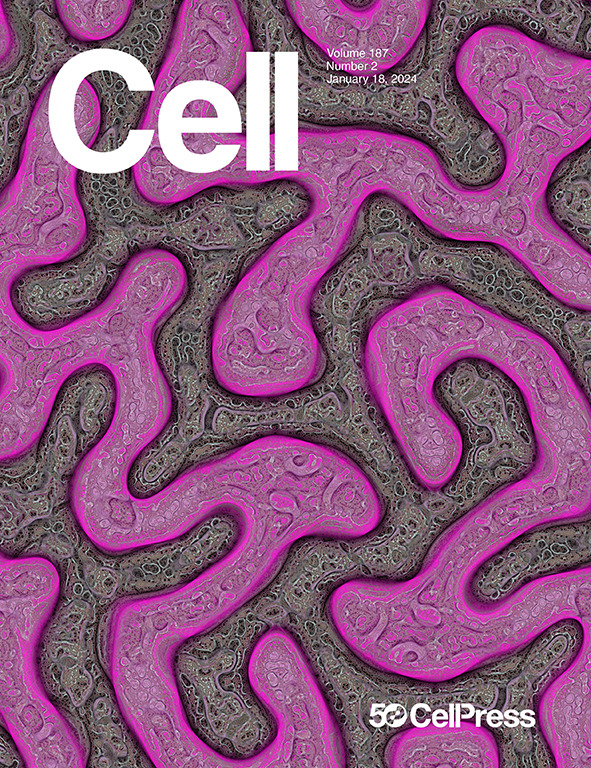双线营养供应环境通过对营养吸收和宿主防御的不同调控促进小肠生理机能的发展
IF 42.5
1区 生物学
Q1 BIOCHEMISTRY & MOLECULAR BIOLOGY
引用次数: 0
摘要
小肠包含一个由管腔饮食和微生物代谢物(肠道侧)以及来自宿主的全身代谢物(血清侧)共同创造的双向营养供应环境。然而,目前还不清楚两侧如何对小肠生理产生不同的影响。在这里,我们绘制了一张全面、高分辨率的小肠两侧营养供应环境图。利用体内宏量营养素追踪和空间代谢组学,我们可视化了营养吸收的时空动态和细胞类型倾向性,以及绒毛内特定区域的代谢异质性。具体来说,来自肠道一侧的谷氨酰胺可促进鹅口疮细胞分泌粘液,而来自浆膜一侧的谷氨酰胺则可通过校准真菌代谢物来松弛上皮屏障。无序的进食模式类似于人类不吃早餐的生活方式,会通过诱导上皮对脂质吸收的记忆而增加患代谢性疾病的风险。这项研究加深了我们对小肠如何通过其独特的营养环境进行时空调节的理解。本文章由计算机程序翻译,如有差异,请以英文原文为准。

A two-front nutrient supply environment fuels small intestinal physiology through differential regulation of nutrient absorption and host defense
The small intestine contains a two-front nutrient supply environment created by luminal dietary and microbial metabolites (enteral side) and systemic metabolites from the host (serosal side). Yet, it is unknown how each side contributes differentially to the small intestinal physiology. Here, we generated a comprehensive, high-resolution map of the small intestinal two-front nutrient supply environment. Using in vivo tracing of macronutrients and spatial metabolomics, we visualized the spatiotemporal dynamics and cell-type tropism in nutrient absorption and the region-specific metabolic heterogeneity within the villi. Specifically, glutamine from the enteral side fuels goblet cells to support mucus production, and the serosal side loosens the epithelial barrier by calibrating fungal metabolites. Disorganized feeding patterns, akin to the human lifestyle of skipping breakfast, increase the risk of metabolic diseases by inducing epithelial memory of lipid absorption. This study improves our understanding of how the small intestine is spatiotemporally regulated by its unique nutritional environment.
求助全文
通过发布文献求助,成功后即可免费获取论文全文。
去求助
来源期刊

Cell
生物-生化与分子生物学
CiteScore
110.00
自引率
0.80%
发文量
396
审稿时长
2 months
期刊介绍:
Cells is an international, peer-reviewed, open access journal that focuses on cell biology, molecular biology, and biophysics. It is affiliated with several societies, including the Spanish Society for Biochemistry and Molecular Biology (SEBBM), Nordic Autophagy Society (NAS), Spanish Society of Hematology and Hemotherapy (SEHH), and Society for Regenerative Medicine (Russian Federation) (RPO).
The journal publishes research findings of significant importance in various areas of experimental biology, such as cell biology, molecular biology, neuroscience, immunology, virology, microbiology, cancer, human genetics, systems biology, signaling, and disease mechanisms and therapeutics. The primary criterion for considering papers is whether the results contribute to significant conceptual advances or raise thought-provoking questions and hypotheses related to interesting and important biological inquiries.
In addition to primary research articles presented in four formats, Cells also features review and opinion articles in its "leading edge" section, discussing recent research advancements and topics of interest to its wide readership.
 求助内容:
求助内容: 应助结果提醒方式:
应助结果提醒方式:


